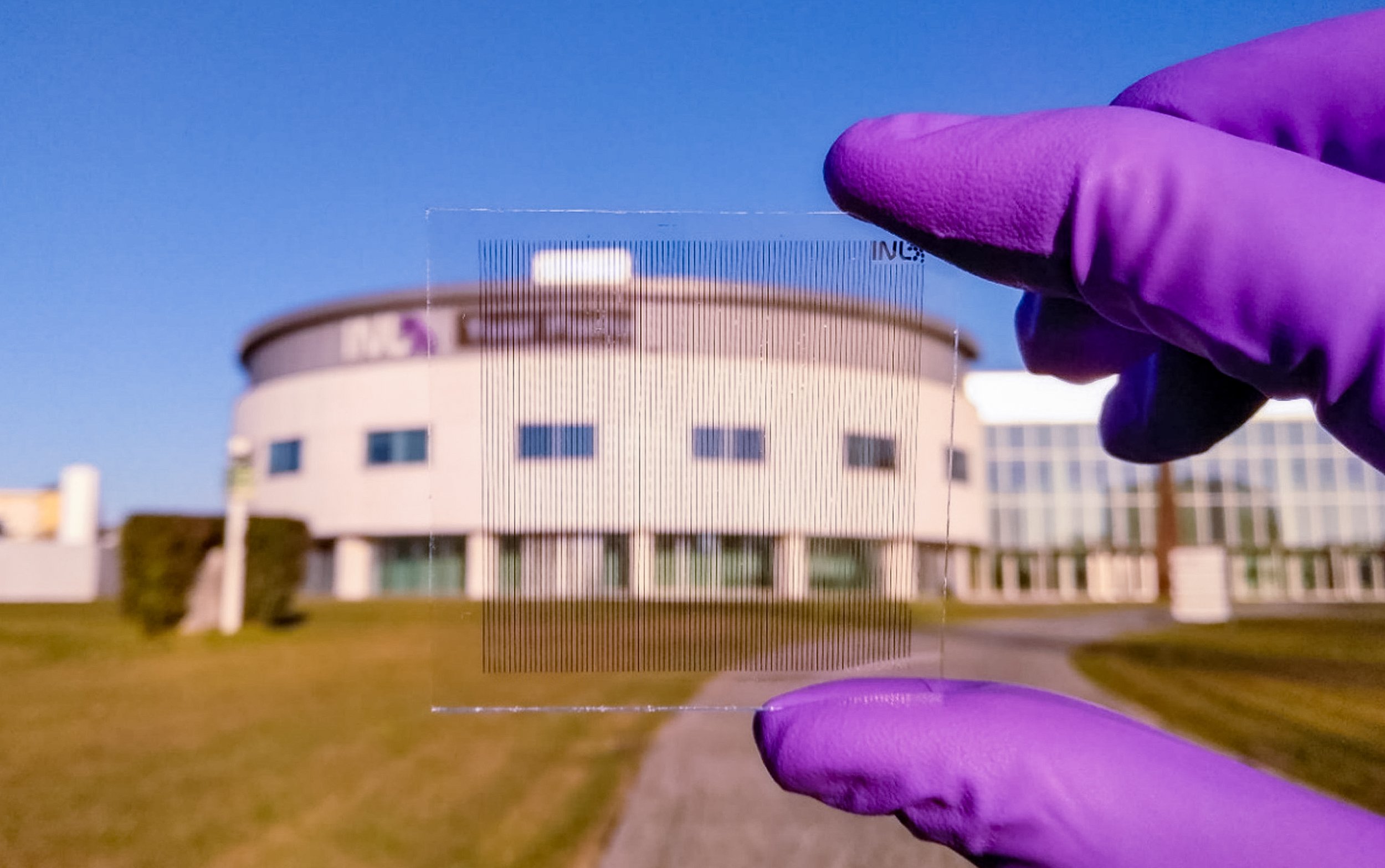
TRANSMIT | Semi-transparent micro-striped thin-film photovoltaics for energy-harvesting windows
We are integrating clean energy into buildings with aesthetically pleasing, high-performance, semi-transparent PV.
Our design philosophy is based on micro-striped solar cells, indistinguishable from the human eye and separated by a fully transparent gap.
We are developing a semi-transparent photovoltaic technology with high average visual transparency and power conversion efficiency. Our novel solution is based on the spatial segmentation of thin-film solar cells applied to windows.
We are working towards integrating clean energy solutions in the built environment.
Our technology's application capabilities are ubiquitous, ranging from residential buildings, business and industrial infrastructures, and logistics platforms like airports and railway terminals to ample parking areas with built-in glass surfaces.
It will contribute to the generation of on-site sustainable electricity in net-zero buildings.
-
Semi-transparent photovoltaic (STPV) windows offer a wide range of benefits to the end user besides in-house electricity production:
• STPV technology eases glare discomfort by absorbing incoming sunlight.
• Windows equipped with STPV prevent solar heat gain in buildings thanks to the solar radiation blockage by solar cells, reducing the need for air conditioning.
• Buildings with STPV integration will be able to synergistically act with other in-house renewable technologies, enabling the infrastructure to adapt the heating, ventilation, and lighting to the needs of the inhabitants, thus optimizing energy usage and distribution.
For cities, the integration of STPV technologies will allow an efficient, cost-effective, and smooth transition to a greener reality:
• Because glass is universal, STPV technologies do not negatively impact urban planning or require special planning for their deployment.
• STPVs will ease construction prices, allow more affordable housing, lower rents and utility bills, and improve indoor environmental quality.
• Once coupled with sensors and electronics, they will contribute to increasing the building's Smart Readiness Indicator.
-
The STPV technologies available in the market still produce a perturbed, unnatural visual experience for the end user.
TRANSMIT proposes a groundbreaking STPV solution that adds value without damaging a window's expected natural and pleasant transparency.
Our approach relies on closely spaced micro-stripes of solar cells, which are indistinguishable to the human eye from a one-meter distance. This results in an almost colour-neutral device.
The aesthetic characteristic is key for special applications in unique contexts such as office buildings, museums, and commercial spaces.
-
TRANSMIT aims to fabricate STPV windows using recyclable materials for the substrate (glass), front panel (glass), interconnects (metals), and semiconductor (CIGS and perovskites).

